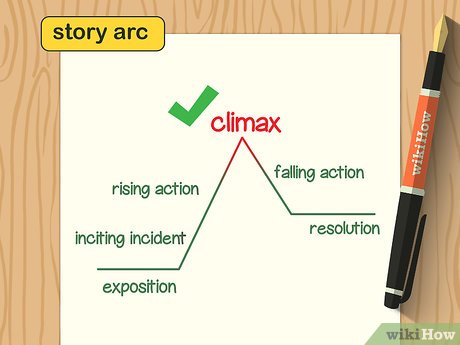How to Start Writing a Book
Writing a book can be an exciting but overwhelming journey, especially if it’s your first time. Whether you have a burning story to tell or a unique idea to share, getting started is often the hardest part. In this blog, we will break down the process into simple, actionable steps to help you turn your thoughts into a completed manuscript.
1. Define Your Purpose and Audience
Before you start writing, it’s essential to have a clear understanding of why you are writing and who you are writing for. This will guide your tone, style, and content.
Ask yourself these questions:
Why do I want to write this book? (Is it to entertain, inform, inspire, or persuade?)
Who is my target audience? (Children, adults, professionals, or hobbyists?)
What value will my book provide to readers?
By identifying your purpose and audience, you will have a better focus throughout the writing process.

2. Choose Your Genre and Topic
Next, you’ll want to determine the genre of your book. This step will shape the structure and expectations of your writing.
Common genres include:
Fiction (Mystery, Romance, Sci-Fi, Fantasy, etc.)
Non-fiction (Biography, Self-help, How-to guides, etc.)
Once you choose your genre, narrow down your topic. If you’re writing fiction, develop a central theme or idea. For non-fiction, focus on a subject you’re knowledgeable about or passionate about sharing.
3. Brainstorm and Outline Your Ideas
Now that you know your genre and topic, start brainstorming ideas and plot points. You don’t have to be perfect at this stage; the goal is to get everything down on paper.
Ways to brainstorm:
Write down all the ideas that come to your mind, even if they seem disorganized.
Create a mind map connecting different themes or subplots.
Ask yourself “What if?” questions to stimulate creativity.
After brainstorming, organize your ideas into an outline. An outline serves as a roadmap, helping you navigate your writing process without getting lost.
Basic outline structure:
Introduction: Hook your readers and introduce key characters or ideas.
Middle: Develop the main plot, conflicts, or points.
End: Provide a satisfying conclusion, whether it’s resolving conflicts or delivering key takeaways.

4. Create a Writing Schedule
Consistency is key when writing a book. Establishing a routine will help you stay motivated and make steady progress.
Tips for setting a writing schedule:
Set daily or weekly word count goals (e.g., 500 words a day).
Dedicate specific times during the day for writing.
Make sure your writing environment is free from distractions.
5. Develop Your Characters or Concepts
If you’re writing fiction, your characters will be central to the story. For non-fiction, the focus will be on developing your main ideas or concepts.
Fiction writers:
Create detailed character profiles (appearance, personality, backstory).
Make sure your characters have strengths, weaknesses, and goals.
Ensure character development by showing how they change over the course of the story.
Non-fiction writers:
Dive deep into the core concepts of your topic.
Use case studies, research, or personal experiences to support your points.
Organize your concepts in a logical flow for easy comprehension.

6. Write the First Draft
Now comes the time to start writing! Don’t worry about getting everything perfect on the first try; that’s what editing is for.
Tips for writing your first draft:
Focus on getting your thoughts on paper without overthinking.
Follow your outline but be flexible if new ideas emerge.
Write consistently to maintain momentum.
Remember, your first draft is supposed to be messy. The goal is to capture your story or message.
7. Edit and Revise Your Manuscript
After finishing the first draft, the editing process begins. This is where you refine your work, fix mistakes, and improve the overall structure and flow.
Steps to edit and revise:
Take a break before you begin editing to gain a fresh perspective.
Review your manuscript for structural issues (plot holes, confusing ideas, etc.).
Edit for grammar, punctuation, and spelling errors.
Cut out unnecessary details or words that don’t contribute to the story or message.

8. Get Feedback
No writer can catch every issue on their own. Having others review your work can provide valuable insights and suggestions.
How to get feedback:
Share your manuscript with trusted friends, family, or fellow writers.
Join a writing group or community where you can exchange feedback.
Consider hiring a professional editor for more detailed guidance.
Feedback will help you see your book from a different perspective and improve it further.
9. Revise Based on Feedback
After receiving feedback, make revisions where necessary. Don’t feel pressured to change everything based on every suggestion, but take constructive criticism seriously.
Tips for revising:
Be open-minded to suggestions but stay true to your vision.
Prioritize changes that improve clarity, pacing, or character development.
Re-read your manuscript after revisions to ensure the changes align with your original purpose.

10. Final Proofread
Before you consider your book complete, give it a final proofread. This step is crucial for catching any remaining errors or inconsistencies.
Things to look out for:
Typos and spelling mistakes.
Consistent tone and style.
Any formatting issues (especially if you’re self-publishing).
A polished manuscript will make a better impression on agents, publishers, or readers if you’re self-publishing.
11. Publish or Submit Your Manuscript
Once your manuscript is complete, decide how you want to share it with the world. You have two main options:
Traditional publishing: Submit your manuscript to agents or publishing houses. Be prepared for rejection, but don’t give up.
Self-publishing: Platforms like Amazon Kindle or other self-publishing services allow you to take full control over your book’s release.
Conclusion
Writing a book is a rewarding journey, but it takes dedication, planning, and effort. By following these steps—defining your purpose, outlining your ideas, maintaining a writing schedule, and editing thoroughly—you can turn your vision into a finished book. Remember, every great book started with just one word. So take that first step and begin writing today!
